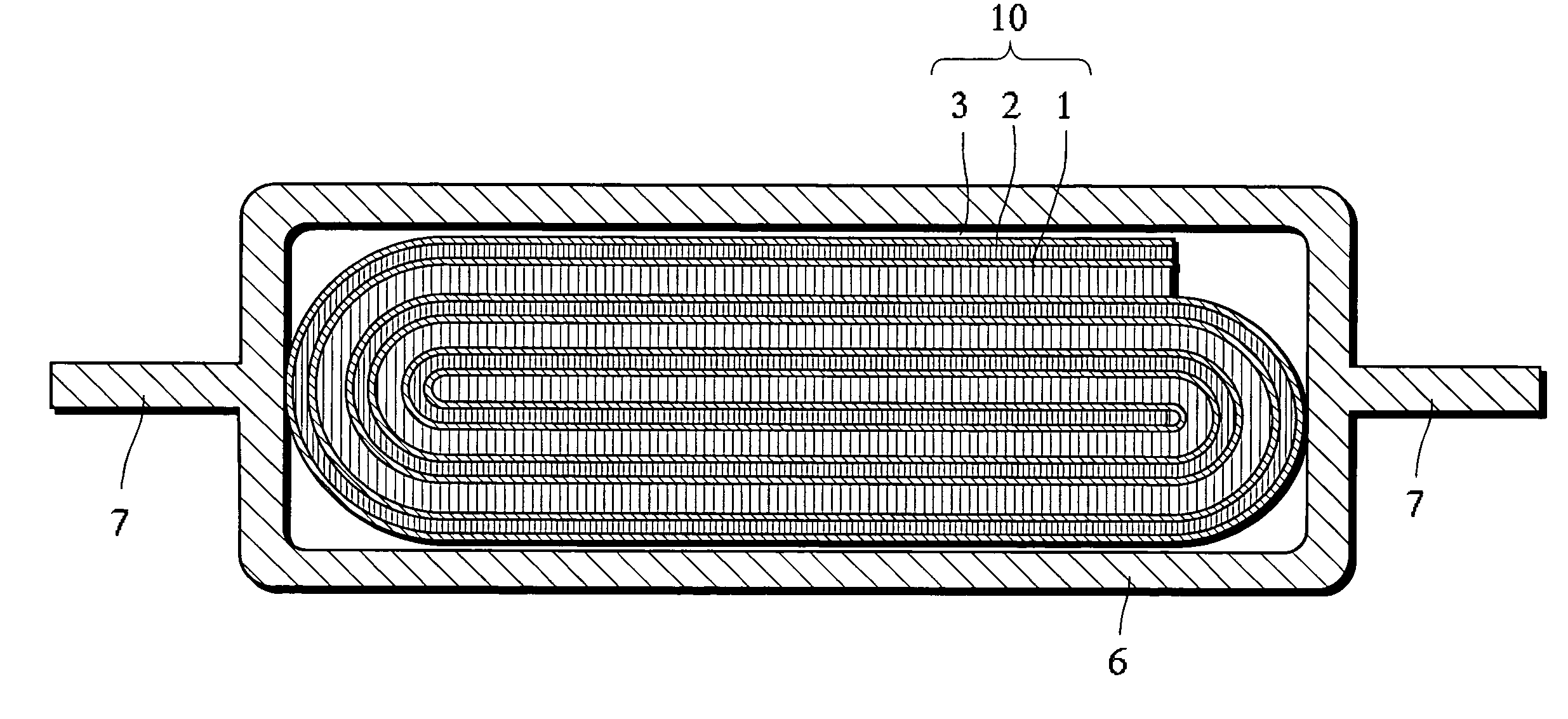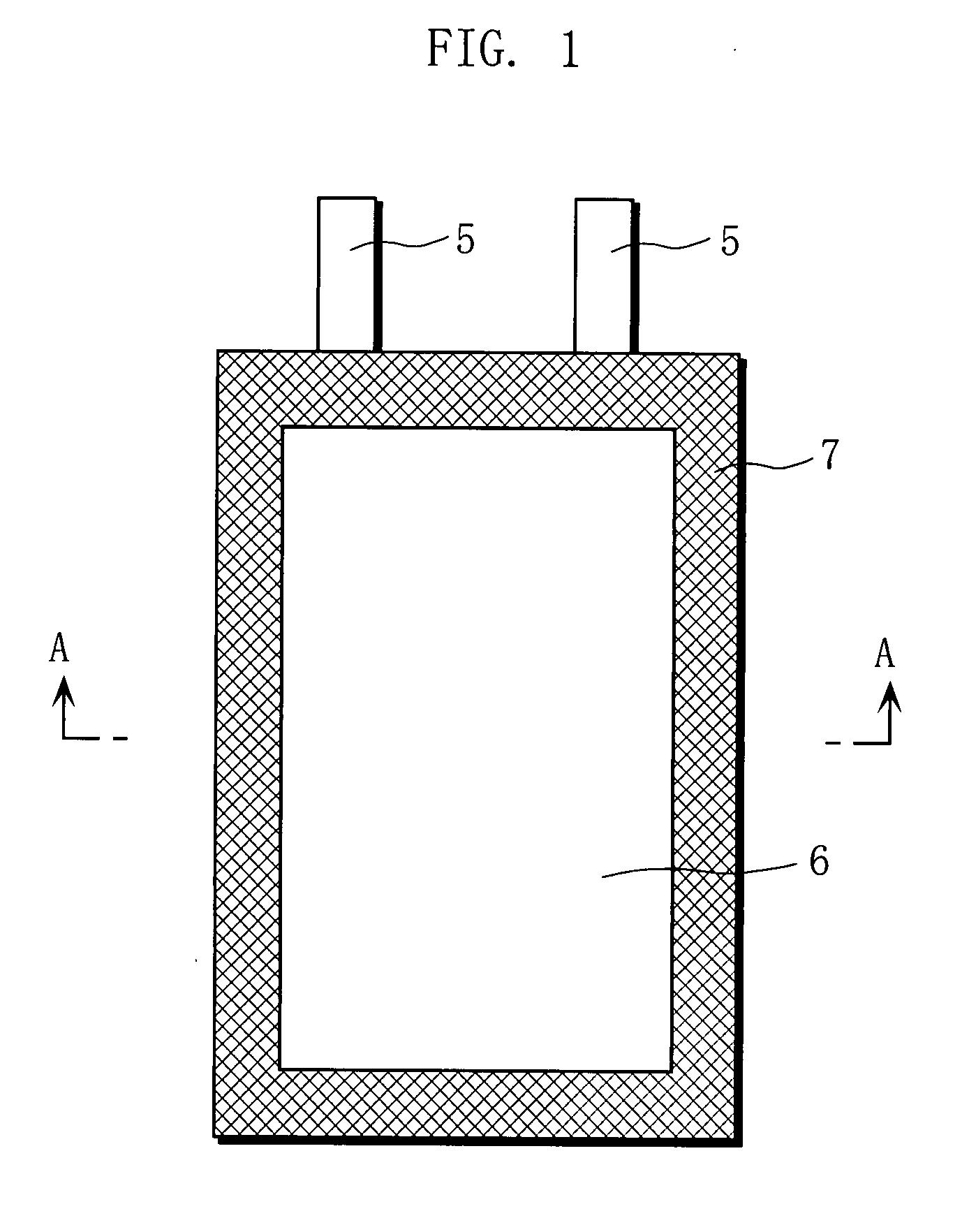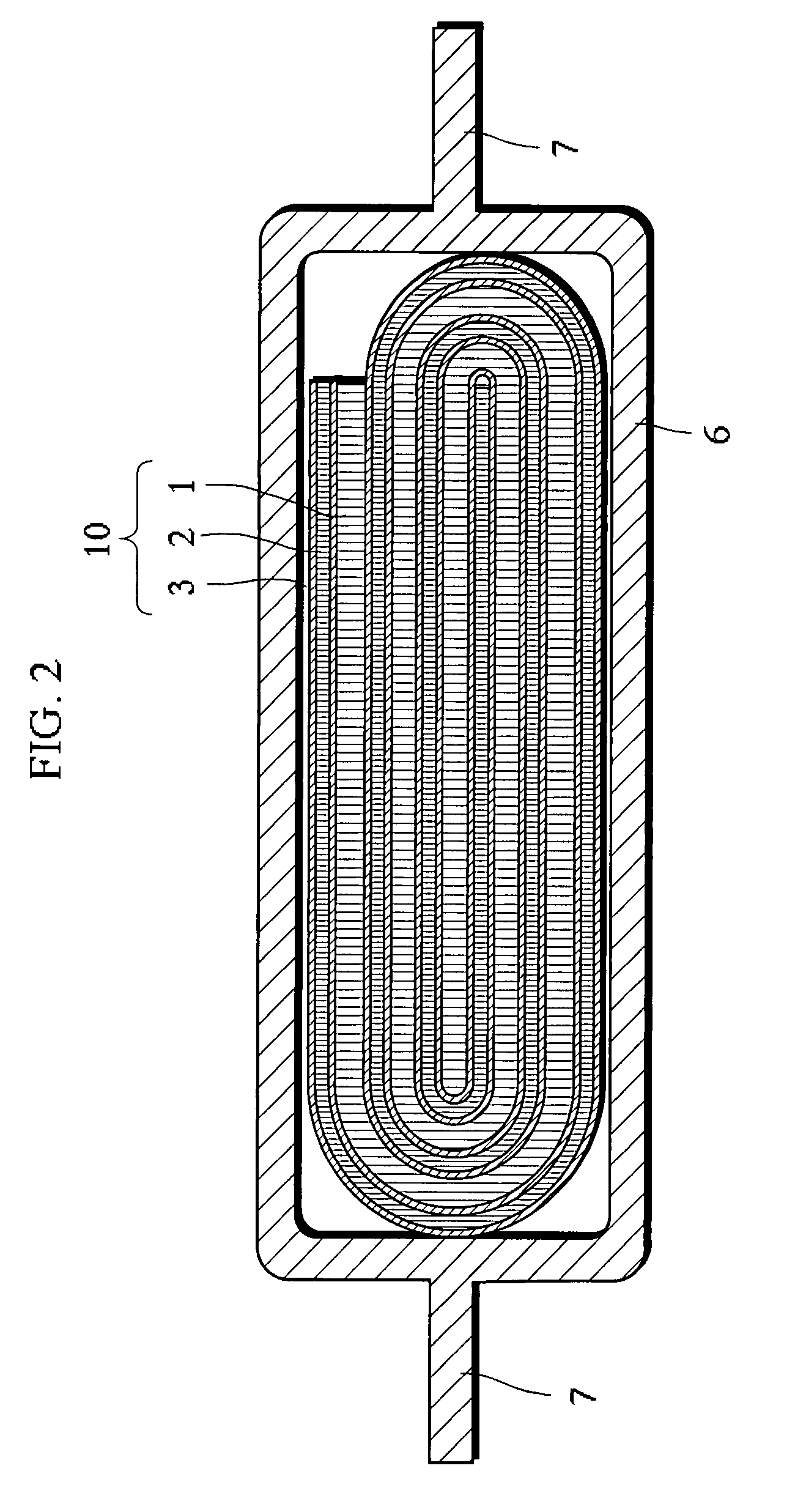Non-aqueous electrolyte secondary battery
a secondary battery and non-aqueous electrolyte technology, applied in the direction of non-aqueous electrolyte cells, cell components, electrochemical generators, etc., can solve the problems of poor thermal stability of the battery employing licoo, sub>is not expected to achieve sufficient discharge capacity, and high manufacturing cost. , the effect of low cos
- Summary
- Abstract
- Description
- Claims
- Application Information
AI Technical Summary
Benefits of technology
Problems solved by technology
Method used
Image
Examples
examples
[0040]Hereinbelow, embodiments of the non-aqueous electrolyte secondary battery according to the invention are described with reference to FIGS. 1 and 2. It should be construed, however, that the present invention is not limited to the following examples but various changes and modifications are possible without departing from the scope of the invention.
Preparation of Positive Electrode
[0041]First, a positive electrode active material, and acetylene black, serving as a conductive agent (BET specific surface area: 39 m2 / g), were added into a solution in which polyvinylidene fluoride as a binder is dissolved in N-methyl-2-pyrrolidone as a dispersion medium, so that the mass ratio of the positive electrode active material, the conductive agent, and the binder was 90:5:5. Then, the mixture was kneaded to produce a positive electrode slurry. Next, the resultant positive electrode slurry is applied onto an aluminum foil serving as a positive electrode current collector, and then dried. Th...
first embodiment
Example A1
[0048]A battery fabricated in the same manner as described in the foregoing embodiment was used as a battery of Example 1.
[0049]The battery thus fabricated is hereinafter referred to as Battery A1 of the invention.
example a2
[0050]A battery was fabricated in the same manner as described in Example 1 above, except that the amount of VC in the electrolyte solution was 0.2 mass %.
[0051]The battery thus fabricated is hereinafter referred to as Battery A2 of the invention.
[0052]In Battery A2 of the invention, the mass of the electrolyte solution is 3.2 g, and the amount of VC in the electrolyte solution is 0.2 mass %. Therefore, the absolute amount of VC can be found by the following equation (3).
3.2×0.2×0.01×1000=6.4 (mg) (3)
[0053]As described above, the mass of the positive electrode active material is 4 g. Therefore, the amount of VC added per 1 g of the positive electrode active material can be found by the following equation (4).
6.4 / 4=1.6 (mg) (4)
PUM
| Property | Measurement | Unit |
|---|---|---|
| filling density | aaaaa | aaaaa |
| filling density | aaaaa | aaaaa |
| median particle diameter | aaaaa | aaaaa |
Abstract
Description
Claims
Application Information
 Login to View More
Login to View More - R&D
- Intellectual Property
- Life Sciences
- Materials
- Tech Scout
- Unparalleled Data Quality
- Higher Quality Content
- 60% Fewer Hallucinations
Browse by: Latest US Patents, China's latest patents, Technical Efficacy Thesaurus, Application Domain, Technology Topic, Popular Technical Reports.
© 2025 PatSnap. All rights reserved.Legal|Privacy policy|Modern Slavery Act Transparency Statement|Sitemap|About US| Contact US: help@patsnap.com



